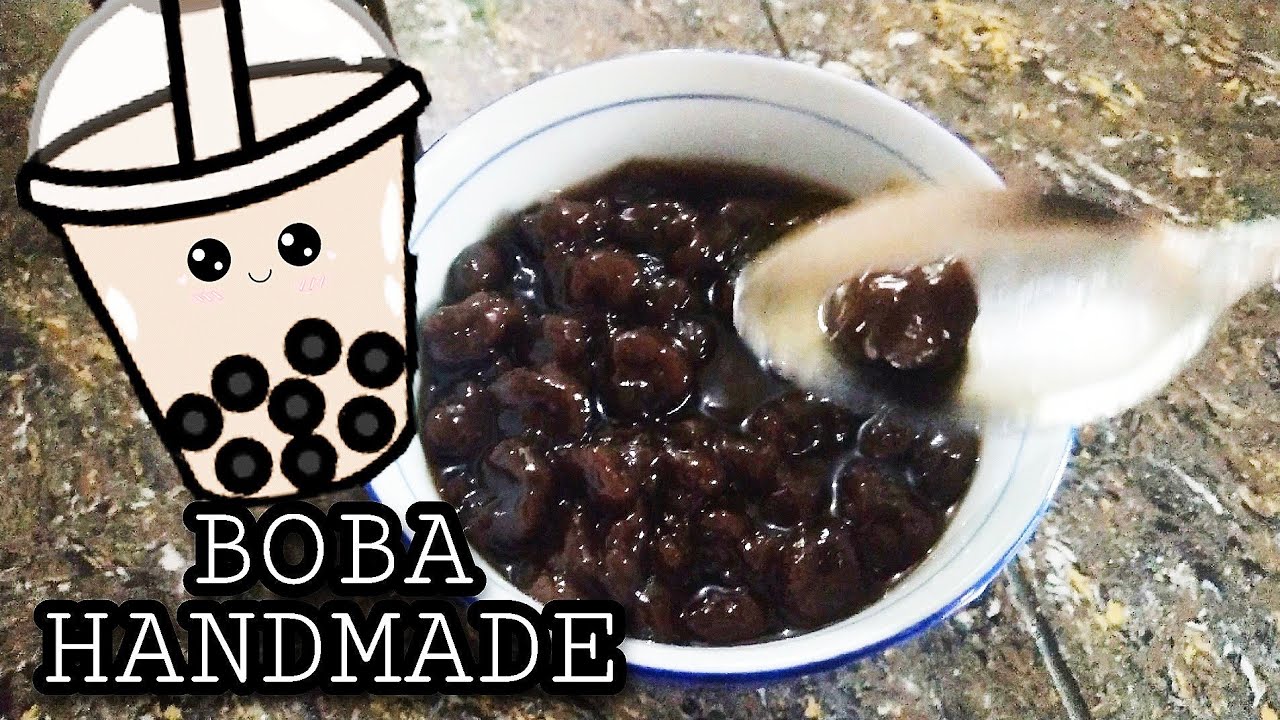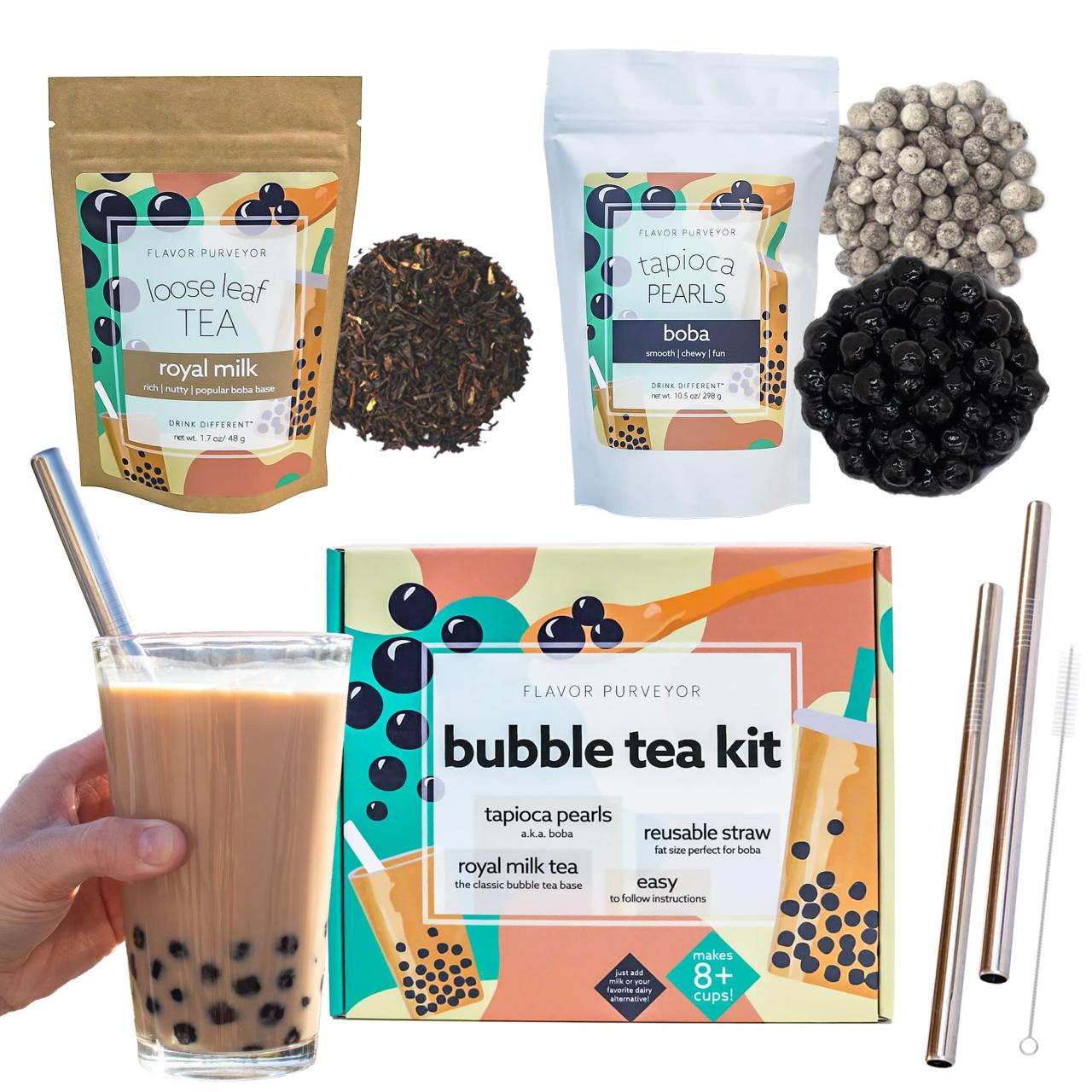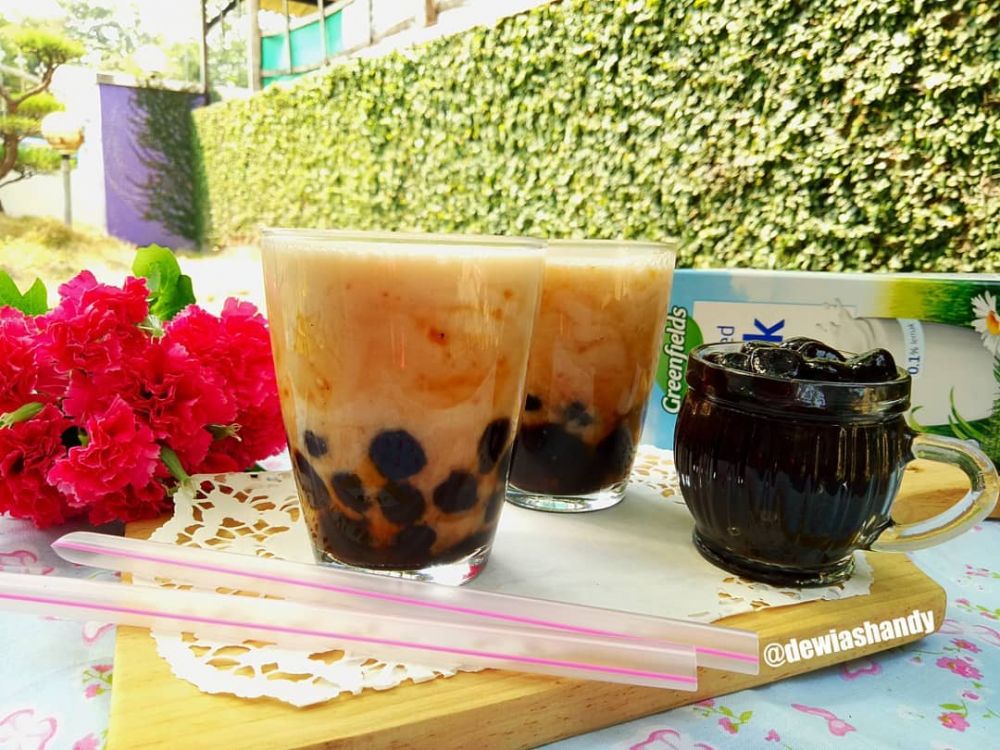DIY Boba: Make Your Own Bubble Tea at Home – The world of boba tea has taken the globe by storm, captivating taste buds with its unique blend of flavors and textures. While indulging in this popular beverage at a local shop is a treat, there’s a growing movement towards crafting your own boba at home. This trend, known as DIY boba, empowers individuals to personalize their boba experience, experimenting with flavors, toppings, and techniques.
The appeal of DIY boba lies in its versatility and control. From choosing your favorite tea base to customizing the sweetness and toppings, the possibilities are endless. Not only is it a fun and rewarding culinary adventure, but it also offers cost savings and the satisfaction of creating something delicious from scratch.
Basic Boba Tea Recipes

Boba tea, also known as bubble tea, is a popular Taiwanese beverage that has gained global recognition. Its versatility allows for endless variations, but mastering the basics is essential for creating delicious and satisfying boba tea. This section will guide you through three fundamental recipes: a classic milk tea, a refreshing fruit tea, and a bold coffee boba.
Classic Milk Tea
The classic milk tea recipe is a foundation for many boba tea variations. It features a simple yet harmonious blend of black tea, milk, and sugar.
- Ingredients:
- 1 cup of water
- 2 black tea bags (or 2 tablespoons loose black tea leaves)
- 1/2 cup of milk (whole milk, almond milk, or soy milk)
- 2 tablespoons of sugar (adjust to taste)
- 1/2 cup of boba pearls (cooked)
- Instructions:
- Bring the water to a boil in a saucepan.
- Add the tea bags (or loose tea leaves) and reduce heat to a simmer.
- Steep for 5 minutes, then remove the tea bags (or strain the tea leaves).
- Let the tea cool slightly.
- Add the milk and sugar to the tea, stirring until the sugar dissolves.
- Pour the tea over ice in a glass.
- Add the cooked boba pearls and enjoy!
Tip: For a richer flavor, try using a stronger black tea like Earl Grey or Assam. You can also adjust the sweetness level by adding more or less sugar.
Fruit Tea
Fruit teas offer a vibrant and refreshing twist on traditional boba tea. The sweetness of the fruit complements the tea, creating a balanced and flavorful beverage.
- Ingredients:
- 1 cup of water
- 1 cup of fruit (strawberries, mango, or passionfruit)
- 2 tablespoons of sugar (adjust to taste)
- 1/2 cup of boba pearls (cooked)
- Instructions:
- Bring the water to a boil in a saucepan.
- Add the fruit and sugar to the boiling water.
- Reduce heat and simmer for 5 minutes, or until the fruit is softened.
- Strain the fruit mixture to remove any seeds or pulp.
- Pour the fruit tea over ice in a glass.
- Add the cooked boba pearls and enjoy!
Tip: Experiment with different fruits to create unique flavor combinations. For example, you can add a splash of lemon juice for a tangy twist or a few mint leaves for a refreshing aroma.
Coffee Boba
For a caffeine kick with a boba twist, try a coffee boba. This recipe combines the boldness of coffee with the chewy texture of boba pearls.
- Ingredients:
- 1 cup of strong brewed coffee (cold or hot)
- 2 tablespoons of sugar (adjust to taste)
- 1/2 cup of boba pearls (cooked)
- Instructions:
- Pour the coffee into a glass filled with ice.
- Add the sugar and stir until dissolved.
- Add the cooked boba pearls and enjoy!
Tip: For a more decadent coffee boba, add a dollop of whipped cream or a sprinkle of chocolate powder. You can also experiment with different coffee flavors, such as vanilla or hazelnut.
Boba Variations and Customization: Diy Boba

The world of boba tea is incredibly diverse, with countless variations and customization options to suit every taste. From the classic milk tea to more adventurous concoctions, there’s a boba tea for everyone. This section explores popular boba tea variations and provides a comprehensive guide to customizing your perfect cup.
Popular Boba Tea Variations
Boba tea variations often revolve around the base tea, the sweetener, and the boba pearls. These variations offer a wide range of flavors and textures, allowing you to explore different flavor profiles and find your personal favorite.
- Brown Sugar Boba: This variation features a rich, caramelized brown sugar syrup that adds a deep sweetness and a touch of bitterness. The boba pearls are often cooked in the brown sugar syrup, absorbing its flavor and creating a chewy, caramelized texture.
- Matcha Boba: Matcha boba incorporates the earthy and slightly bitter flavor of matcha powder. It is typically made with a mixture of matcha powder, milk, and sweetener. The boba pearls are usually cooked in a simple syrup, offering a classic boba texture that complements the matcha flavor.
- Taro Boba: Taro boba utilizes the unique flavor of taro root, which is known for its sweet, slightly nutty, and creamy taste. The taro root is often blended with milk and sweetener to create a smooth and vibrant purple base. The boba pearls are typically cooked in a simple syrup, providing a familiar boba texture that complements the taro’s unique flavor.
Customizing Your Boba Tea
Boba tea is a blank canvas for customization, allowing you to create your own unique flavor combinations. Here’s a guide to customizing your boba tea with different toppings, sweeteners, and flavors.
Toppings
Toppings add texture and flavor to your boba tea. Here are some popular choices:
- Boba Pearls: These chewy tapioca pearls are the quintessential boba tea topping. They come in various sizes, textures, and flavors, including classic black boba, brown sugar boba, and even flavored boba with mango, strawberry, or coconut.
- Puddings: Puddings like taro, mango, or red bean add a creamy and decadent element to your boba tea.
- Jelly: Jelly, such as aloe vera or lychee, provides a refreshing and slightly chewy texture.
- Popping Boba: These boba pearls are filled with fruit juice that bursts in your mouth, adding a refreshing and juicy element.
Sweeteners
Sweeteners are essential for balancing the flavors in your boba tea. You can choose from various options based on your preference:
- Sugar: Regular sugar is a classic choice, offering a simple and straightforward sweetness.
- Brown Sugar: Brown sugar adds a rich, caramelized flavor and a touch of bitterness.
- Honey: Honey provides a natural sweetness with floral notes.
- Agave: Agave is a natural sweetener with a slightly caramel-like flavor.
Flavors
The base flavor of your boba tea is a crucial element in creating your unique combination. Here are some popular flavor options:
- Milk Tea: The classic milk tea is a versatile base, allowing you to add various flavors and toppings.
- Fruit Tea: Fruit teas, such as mango, strawberry, or passionfruit, offer a refreshing and fruity flavor.
- Coffee: Coffee boba tea combines the caffeine kick of coffee with the chewy texture of boba pearls.
- Matcha: Matcha boba tea offers a unique earthy and slightly bitter flavor.
- Taro: Taro boba tea provides a sweet, nutty, and creamy flavor.
Creating Unique Boba Tea Combinations, Diy boba
The possibilities for unique boba tea combinations are endless. Here are some ideas to inspire your creativity:
- Matcha Latte with Brown Sugar Boba: Combine the earthy flavor of matcha with the sweetness and caramel notes of brown sugar boba.
- Mango Smoothie with Popping Boba: Blend fresh mango with milk and sweetener, then add popping boba for a burst of fruity flavor.
- Taro Milk Tea with Taro Pudding: Enhance the creamy taro flavor with a layer of taro pudding for a decadent and satisfying treat.
- Coffee Boba with Coffee Jelly: Combine the caffeine kick of coffee with the chewy texture of coffee jelly for a double dose of coffee flavor.
Boba Tea Culture and History

Boba tea, also known as bubble tea, has become a global phenomenon, captivating taste buds and fostering a vibrant community of enthusiasts. Its journey from humble beginnings to international fame is a testament to its unique flavor profile and the cultural significance it has acquired.
Origins and Evolution of Boba Tea
Boba tea’s origins can be traced back to the 1980s in Taiwan, where a tea shop owner named Liu Han-chieh experimented with a new beverage. He combined black tea with tapioca pearls, creating a delightful and refreshing drink that quickly gained popularity. The name “boba” comes from the Taiwanese word for tapioca pearls, which are the chewy, spherical balls that add a delightful texture to the drink.
Global Popularity and Cultural Significance
The popularity of boba tea quickly spread beyond Taiwan, reaching other parts of Asia and eventually making its way to the rest of the world. It has become a staple drink in many countries, especially among young people who appreciate its versatility and customization options.
Boba tea has transcended its status as a simple beverage and has become a symbol of youth culture, social gatherings, and shared experiences.
The cultural significance of boba tea is evident in the numerous variations that have emerged over the years. From classic milk tea to fruit-infused concoctions, there’s a boba tea for every taste and preference. The vibrant colors, unique flavors, and playful toppings have made boba tea a visually appealing and Instagram-worthy treat.
Impact of DIY Boba on the Boba Tea Community
The rise of DIY boba has had a significant impact on the boba tea community. It has allowed individuals to experiment with different flavors and ingredients, creating their own personalized boba tea experiences.
DIY boba has empowered consumers to become more involved in the creation of their favorite beverage, fostering a sense of creativity and community among boba enthusiasts.
The DIY boba trend has also contributed to the growth of the boba tea market, with many online retailers and specialty stores offering a wide range of ingredients and supplies. This has made it easier for individuals to create their own boba tea at home, further expanding the reach and popularity of this beloved beverage.
Closure
The world of DIY boba is a vibrant and ever-evolving landscape, offering endless opportunities for creativity and deliciousness. Whether you’re a seasoned boba enthusiast or a curious newcomer, embarking on this DIY journey is a delightful way to explore the art of bubble tea and discover your own unique flavor combinations. So, gather your ingredients, put on your apron, and let the boba adventure begin!
Making your own boba tea is a fun and rewarding experience, letting you customize your flavors and toppings. If you’re looking for a similar creative outlet, you might enjoy building a diy fairy garden. Both activities involve creating a miniature world with your own unique touches, and both offer a chance to relax and express your creativity.
Just like a perfect boba, a fairy garden is best enjoyed with a touch of whimsy and imagination.
